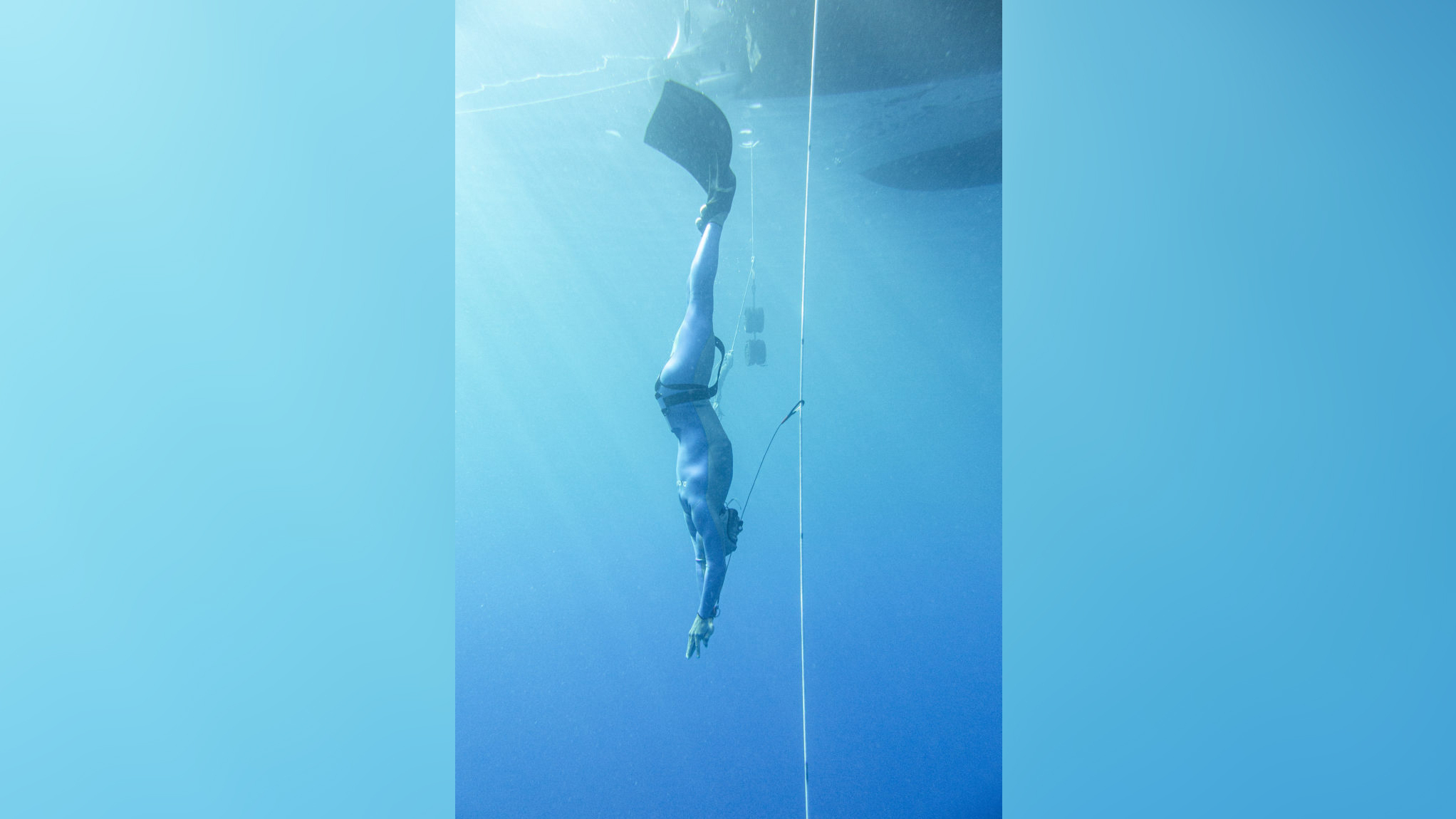Free divers' heart rates can drop as low as 11 beats per minute
The world's best free divers can survive brain oxygen levels lower than those found in seals.

The world's best free divers can survive brain oxygen levels lower than those found in seals, according to a new study.
Free divers, or those that dive without breathing gear, can hold their breath for more than 4 minutes and descend to ocean depths of more than 328 feet (100 meters). But this endurance feat takes a toll on the body's ability to pump oxygen through the blood and to the brain. And if not enough oxygen goes to the brain, free divers are at risk of losing consciousness.
"Before now, understanding the effects on these exceptional divers' brains and cardiovascular systems during such deep dives, and just how far these humans push their bodies, was not possible, as all research was done during simulated dives in the lab," senior author Erika Schagatay, a professor of animal physiology at Mid Sweden University, said in a statement.
Related: Striking shots: winning photos reveal amazing life underwater
"The diver can reach a point where hypoxic (low-oxygen) blackout occurs, and the diver then needs to be rescued," Schagatay said. "One of the main aims of the research is to warn the diver and safety personnel of an imminent blackout."
To understand how this extreme feat affects the human body, Schagatay and her team — along with researchers from the University of St Andrews in Scotland, Carnegie Mellon University in Pennsylvania and the University of Tokyo — adapted a biomedical device, previously developed by the Dutch company Artinis Medical Systems, to withstand extreme ocean pressures.
The biomedical device, which is typically used to measure brain function, fires two different wavelengths of light from LEDs onto the divers' foreheads to measure heart rate and oxygen levels in the blood and in the brain, according to a video about the research. The device worked at depths of at least 351 feet (107 m), according to the statement.
Get the world’s most fascinating discoveries delivered straight to your inbox.
The researchers found that the free divers who reached those depths had brain oxygen levels that dropped to levels lower than those found in seals; some dropped as low as 25%. That's "equivalent to some of the lowest values measured at the top of Mount Everest," Chris McKnight, a research fellow at the University of St Andrews' Sea Mammal Research Unit, said in the statement. Brain oxygen levels are typically around 98%, and if they drop below 50%, a person is almost certain to lose consciousness, according to the statement.
They also found that divers' heart rates dipped as low as 11 beats per minute, McKnight said. As divers descend, their heart rates begin to decrease to help preserve blood-oxygen levels, according to the video.
The divers' heart rates were as low as those of diving seals, whales and dolphins, according to the statement. These marine creatures are some of the world's best athletes; for instance, elephant seals can hold their breath for 2 hours underwater to hunt for food, according to The Conversation.
"Beyond the exceptional physiological responses that free divers display and the extremes they can tolerate, they may be a very informative physiological group," McKnight said. "Their physiological reactions are so unique and the conditions they're exposed to are not easily replicated, so they offer a unique way of understanding how the body responds to low blood oxygen, low brain oxygenation and severe cardiovascular suppression."
The findings can thus also inform researchers on how to protect the hearts and brains of patients who undergo surgical procedures or experience cardiac events, according to the statement.
The findings were published June 28 in the journal Philosophical Transactions of the Royal Society B.
Originally published on Live Science.

Yasemin is a staff writer at Live Science, covering health, neuroscience and biology. Her work has appeared in Scientific American, Science and the San Jose Mercury News. She has a bachelor's degree in biomedical engineering from the University of Connecticut and a graduate certificate in science communication from the University of California, Santa Cruz.


